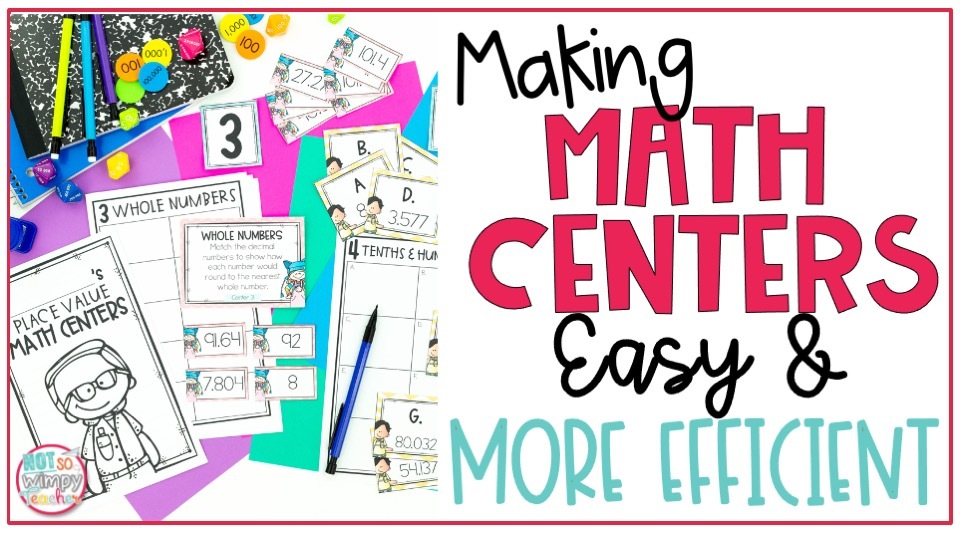
It’s no secret that I love using the workshop method to teach math. A big part of math workshop is centers. Centers are great because they give you the opportunity to meet with small groups and provide differentiated instruction and they keep the rest of your students engaged in learning. But I know centers can sometimes feel overwhelming. Today I’m sharing my tips to help make math centers easy and more efficient.
There are a lot of things to consider when setting up math centers. From keeping kids on task while working independently to establishing an efficient center schedule to prepping and organizing materials, there are a lot of things to prep upfront. But with some simple planning strategies, you can make math centers easy. I promise.
Here are 7 tips to help make math centers easy and more efficient.
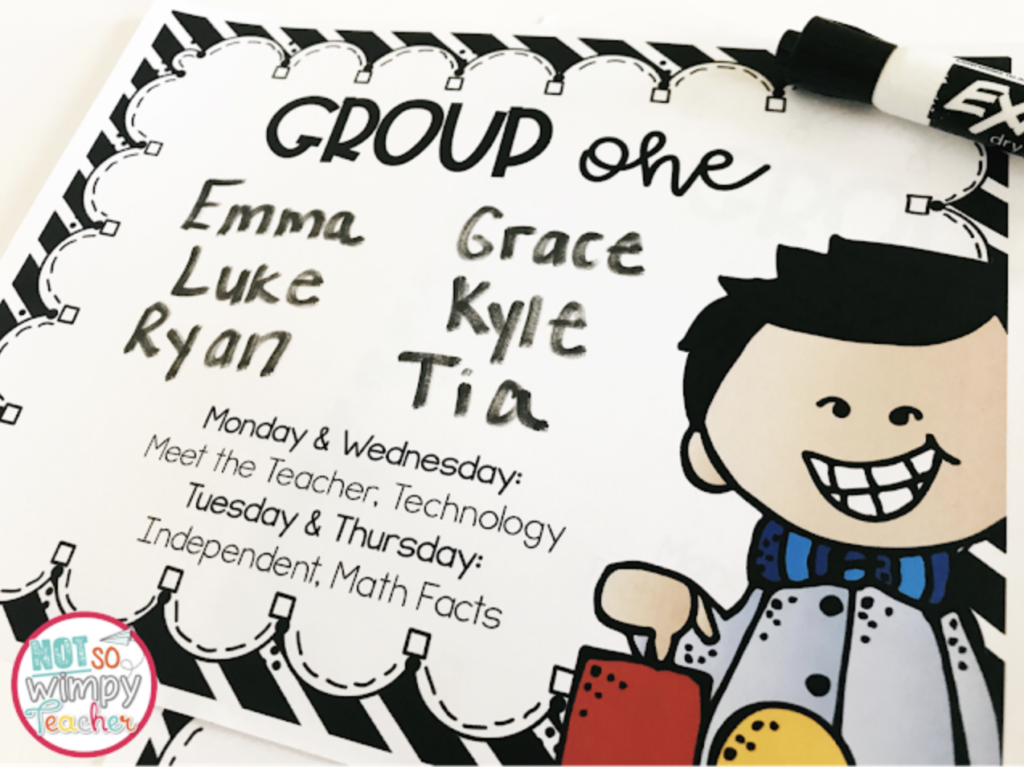
1. Pick a manageable number of groups.
How many groups will you have? And how often will you meet with them? These are the two most important decisions for keeping math centers easy and effective.
The number of groups will be determined, to an extent, by the size of your class. But I recommend no more than 4 groups, even with a large class. You might have 9 or 10 kids per group, which I know is not ideal. But it is much more manageable than addressing the entire group. Read more about using small groups in math. I highly recommend that you limit the number of groups so you can meet with every student regularly.
You don’t have to meet with each group each day. In fact, you probably shouldn’t. Even if you have sixty minutes for math centers (I know most of you don’t), meeting with four groups would mean you only get 15 minutes with each group. By the time you factor in transitions, getting materials, and reviewing the lesson, you are down to only 10 minutes of practice time. Trying to meet with that many groups is not really efficient use of time.
Instead, have your students rotate through only two centers per day. This cuts down on wasted time moving from group to group and ensures more meaningful interactions with the material. You will not meet with every student every day. But you will have a significant chunk of time to address the most important skills when you do meet with your groups, and you will be able to accomplish more.
2. Choose easy math center rotations
Once you decide on how many groups you will have, select enough math centers for each group. These rotations should be easy for you to manage and easy for the students to do on their own. Once you’ve chosen your centers, keep them the same all year long.
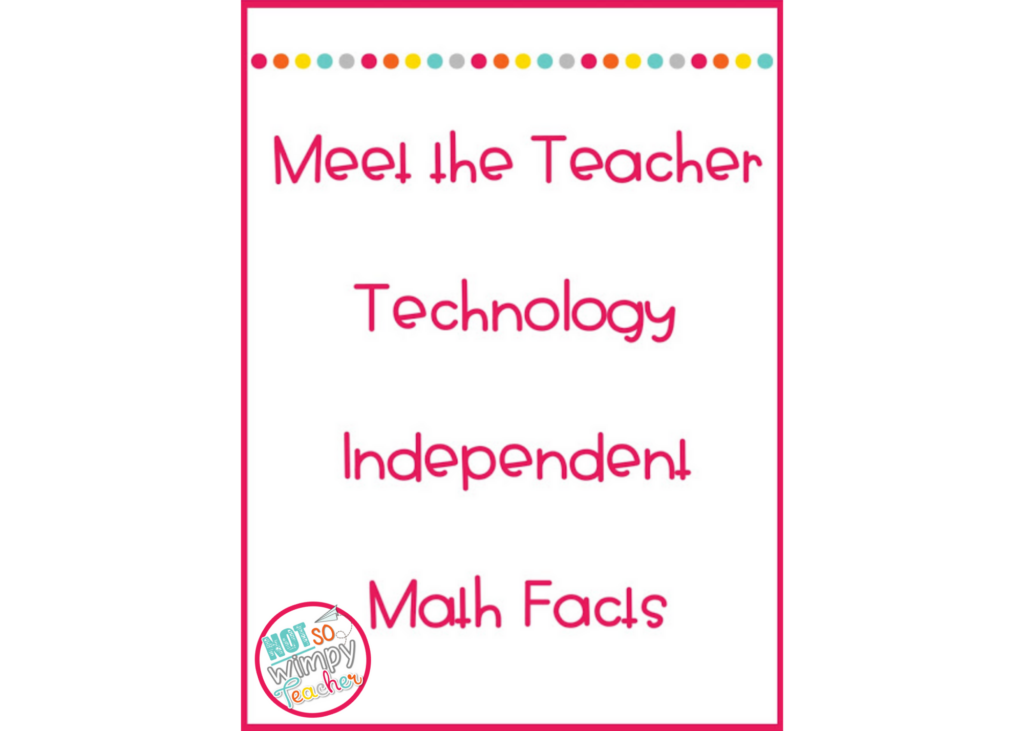
I recommend the following centers:
- Meet the Teacher: This is where the magic happens. You provide differentiated instruction to small groups of students.
- Technology: If you have access to technology (iPad, Chromebooks, computers, etc…), this center is a must. Kids love technology and these activities don’t require any prep from you. Some great math websites to check out include Moby Max, iReady, Prodigy, xTra math.
- Math Facts: Mastering math facts is critical for success in higher-level math, so I like to give kids lots of time to practice in a fun way. You can use technology or simple flashcards to review math facts. Games are also a great way to get in extra math fact practice. My fact fluency program comes with five games that are perfect for your Math Facts center.
- Independent: In this center, students work independently to complete nine or ten review activities over the course of a few weeks. Students love these activities because they are hands-on.
Learn more about my math center rotations.
I don’t use acronyms for my centers. Often teachers try to choose activities that fit a certain acronym like MATH. This puts the focus more on making up activities that start with the correct letter than on activities that are meaningful and easy to manage. Don’t be afraid to just call your centers by the name that makes sense.
3. Make math centers easy with consistent activities
Not only should your centers remain the same all year, but the activities you use within those centers should also remain the same. This makes planning math centers easy because you don’t have to scour the Internet for new math ideas each week. Pick your three favorite websites or apps, teach your students how to use them, and stick with them all year.
The same goes for your independent center activities. Keeping centers consistent saves tons of class time because you only have to give directions once. It also helps set students up for success because they know just what to do.
When selecting activities to keep math centers easy you will want to pick activities that can be used any time of the year. Stay away from seasonal or holiday-based activities. Also, make sure the activities you select are at the right level for your students. You want them to be rigorous enough to be worthwhile and to keep students’ attention, but not so hard that students get discouraged or need help.
If the thought of creating your own math center activities gives you a headache, check out my done-for-you math center bundles. I’ve done all the planning for you.
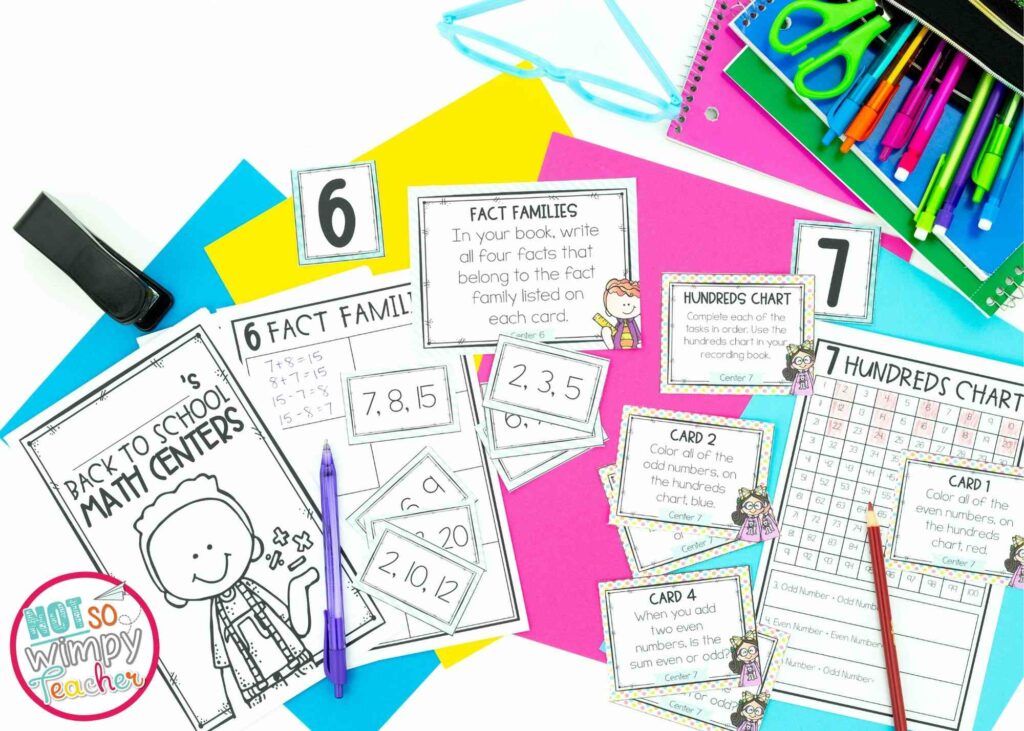
4. Take your time introducing centers
Take your time introducing math centers. Before you introduce them, your students should be able to work independently for fifteen or twenty minutes of time. During center time, you will be meeting with small groups and don’t want to be disturbed.
You will need to model and practice exactly what students should be doing during center time. You really can’t spend too much time establishing routines. From where to find materials to how to move quickly to centers to how to troubleshoot and solve problems on their own, setting clear expectations is the key to making math centers easy. Practice, practice, practice.
When you are getting started, only introduce one activity at a time. Once students have mastered that one, you can introduce the next one. It’s okay if it takes you weeks to introduce all the activities.
5. Prep in advance to make math centers easy
Do yourself a favor and take some time to set up your math centers in advance. You don’t want to be running around in the morning trying to print, cut, and laminate center activities. Or worse, deciding what activities your students will do that day. If you prep your centers in advance, implementing math centers will be much easier.
I recommend printing materials on cardstock. Try printing different center activities on different colored paper to help keep things organized. Make sure to laminate your resources. This saves so much time (and paper) and allows you to use the same materials from year to year.
You can find more tips for prepping center materials here.
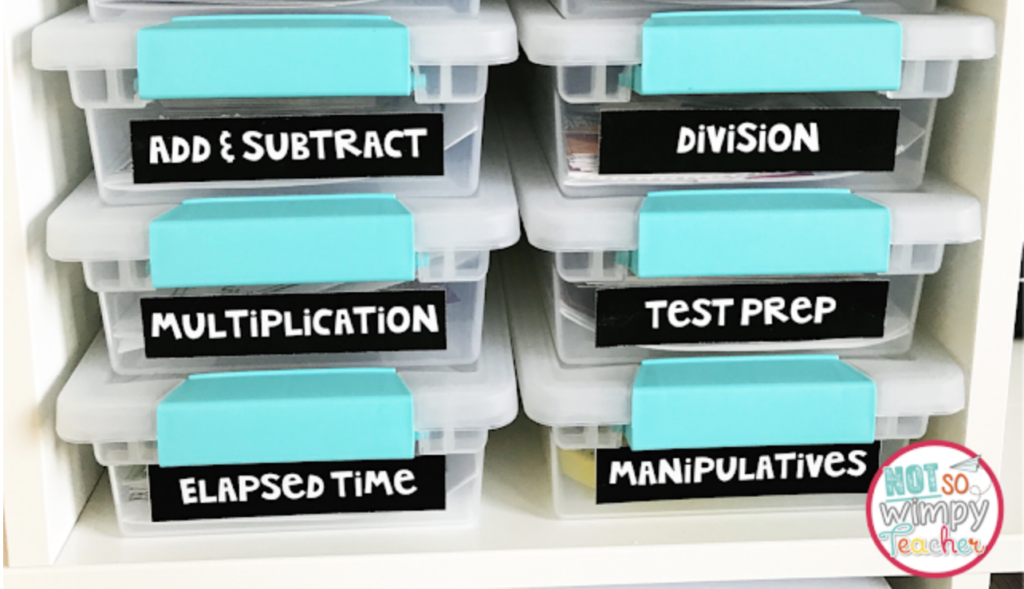
6. Keep materials organized for easy math centers
A good system for organizing materials is crucial to making math centers easy. You will need one way to store and organize center materials that are not being used and another system for your current math center activities. The current center should be easy for kids to access.
I recommend keeping unused centers in clear, labeled bins. This makes it easy to store centers from year to year. You can quickly see which center you need to grab. And these small bins don’t take up much space.
Your current math centers can be stored in small plastic boxes, bins, pencil pouches, or plastic envelopes. You will want to make sure that each activity has its own container so kids can quickly grab the one they want to work on. It’s also helpful to label all the pieces of each center and the container that they go in so that you can easily replace any missing pieces. Find more tips for organizing center materials here.
Need more ideas for organizing all of your math centers? Save time, reduce stress, and eliminate clutter with my simple step-by-step process for prepping, storing, and organizing math materials. My FREE Complete Guide to Organizing Your Math Centers and Manipulatives has everything you need to make it easy for you and your students to find what you need quickly. Plus, FREE math center labels and math manipulative labels are included!
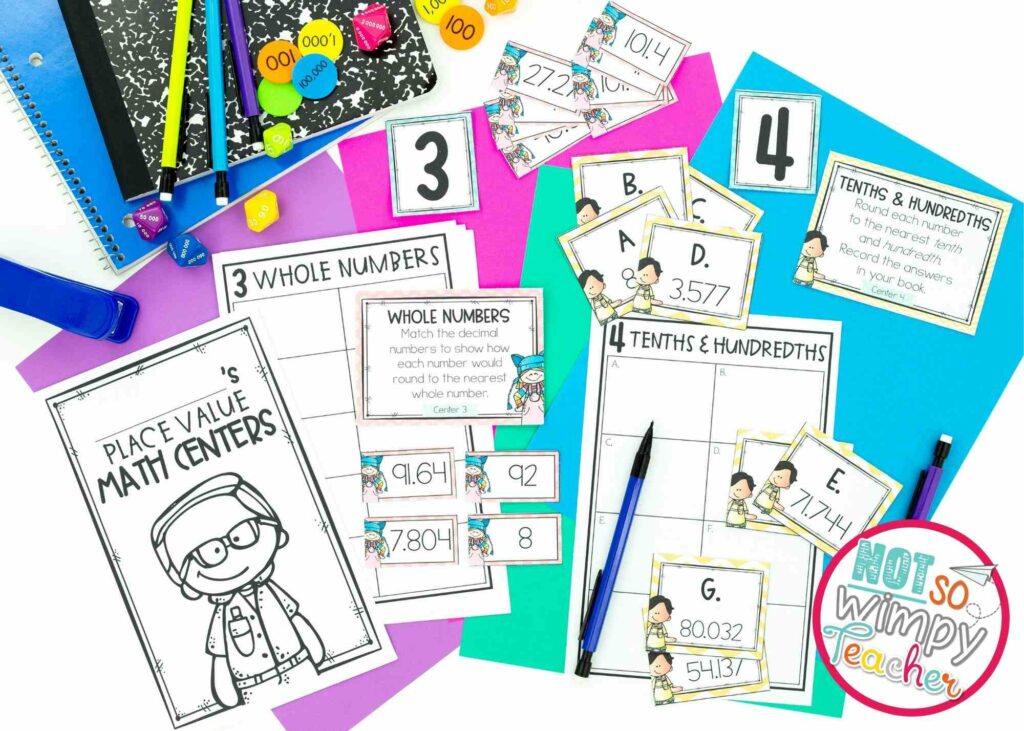
7. Don’t reinvent the wheel
I’ve already done all the work to create rigorous, engaging center activities that kids love. My math center bundles for grades 2-5 contain all the math skills your students need to practice for the entire year. All 90 centers follow the same format so you only have to teach directions once.
These bundles include 9 different topics, with 10 centers each. These hands-on activities can be used any time during the year. I recommend using independent centers for review. I also include detailed teacher directions to help get you started.
Why create your own centers when I’ve already done it for you?
Shop This Post
Work with Me!

The Not So Wimpy Math Masterclass is a professional development course for teachers in grades 2-5 who want to make their math class awesome 😍! And it’s open for enrollment NOW!
You’ll learn how to fit an engaging, chaos-free math workshop in a 60-minute math block that will help your students deepen their skills, confidence, and conceptual understanding of math.
The Not So Wimpy Math Process will show you exactly how to:
- Add centers to your math block that are simple and manageable for you AND wildly effective for your students
- Divide your students into small groups AND provide intervention and enrichment to meet ALL your students’ academic needs
- Subtract ALL the chaos and confusion AND confidently fit everything into your 60-minute math block, and
- Multiply your students’ skills, talents, confidence, and love of math to the power of 100!!
And it works with any curriculum.
If you are ready to build a better math block and make your math class awesome, sign up today!

I hope those tips help make math centers easy and efficient.
Have a Not So Wimpy Day,


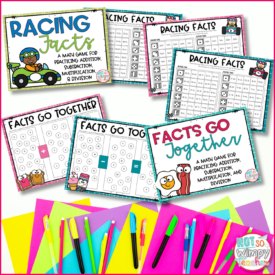
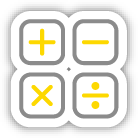
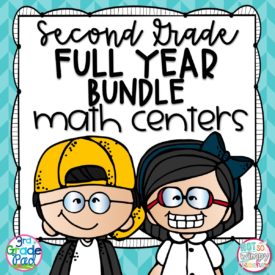
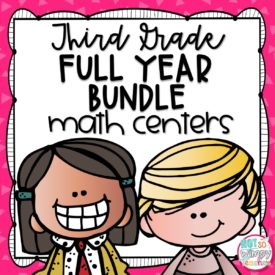
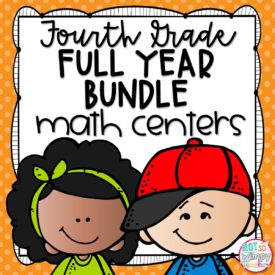
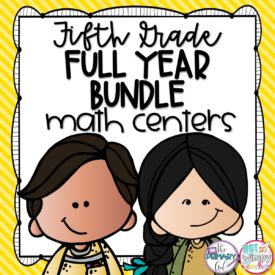



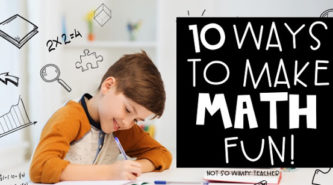











 End of Year Carnival Week for grades 2-5!
End of Year Carnival Week for grades 2-5!
When you use Moby Max as a math center, do you assign specific lessons each time or have them take the beginning test and then work through the program?
THANK YOU for your blog and materials. I am determined to make centers work well in my classroom!
Barb, I had my kids take the test and then begin the program. As we moved along the curriculum I would had assignments for skills I needed them to practice.
I find that Moby works the best if you let the program back fill missing skills. Only once in a blue moon will I assign a lesson… especially in today’s world, where kids may have lost time due to at home instruction or trying to learn online, but usually kids are well below grade level and need that added support. Kids who are at or above grade level can move along at their own pace.
Jamie,
When I first read this blog on my phone there was a post at the end called, “5 Ways to Check for Understanding”. It has mysteriously disappeared since I read your math blog. Can you please send it to me. Thank you.
Hi Joyce,
You can use this link to read that post: https://notsowimpyteacher.com/2017/01/5-ways-to-quickly-check-for.html
I currently use the 5th grade math centers bundle in my classroom, and I think the best part is that we can use it for a spiral review. We are working on fractions right now, but we just finished our division unit. When my students are in their workshop rotations, they are working with centers dealing with division at one station to review, and independent work with fractions to keep up to date with our current unit. I appreciate the consistency that each set of centers offers, and I believe my students are benefitting greatly from it!
Hi Holly,
I love hearing this! Thank you for sharing the success you have using the centers.
How would you structure math centers if you only had thirty minutes per day for math small groups?
Hi Sharon,
Having only 15 minutes for each rotation is tough. After transitions, you really only have about 12 minutes in each rotation. I would suggest looking at your schedule to see if there is any way to find an additional 10-15 minutes for small group time to incorporate centers. You can use the ideas in this blog post https://notsowimpyteacher.com/2019/04/how-to-find-time-to-teach-writing.html